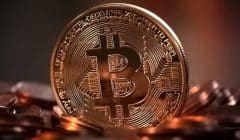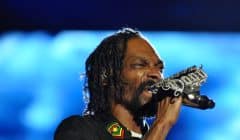- Crypto Casinos
- Bitcoin Games
- Reviews
- Learn
- Essentials
- Are Bitcoin Casinos Legal?
- Crypto Wallets for Gambling
- VPN for Bitcoin Casinos
- What is RTP?
- Gambler’s Fallacy
- Deposit with Credit Card On Bitcoin Casino
- Bankroll Management
- How To Play Bingo
- What Casino Game Has the Best Odds
- Best Casino Game To Win Money
- How VIP Programs Work
- RNG in Casinos
- Slot Machine Odds
- How Free Spins Work
- Poker Cheat Sheet
- Guides
- How to Play Texas Holdem Poker
- How to Play Three Card Poker
- How to Play Pai Gow Poker
- How To Play Omaha Poker
- How to Play Caribbean Stud Poker
- How to Play Seven Card Stud
- How to Play Mississippi Stud Poker
- Poker Odds Guide
- Card Counting in Blackjack
- What is a Blackjack Split
- What is a Push in Blackjack
- Roulette Wheel Explained
- How to Play Craps
- Craps Odds Explained
- Craps Come Bet
- How to Play Baccarat
- Moneyline Betting Explained
- Arbitrage Betting Explained
- How Sportsbetting Betting Odds Work
- Video Poker Odds
- Limit vs No Limit Poker
Origin of Bingo: Tracing the Game’s Historical Roots
Bingo, a game of chance played with randomly drawn numbers that players match against numbers pre-printed on 5×5 matrices, enjoys worldwide popularity.
The game’s history traces back to 16th century Italy, where it originated as a form of lottery known as “Lo Giuoco del Lotto D’Italia,” which is still played every Saturday.
From Italy, the game spread to France in the late 1700s, where it was called “Le Lotto,” a game favored by the French aristocracy.
During the 1920s, a variation of the game entered North America, where it became known as “Beano.”
The game’s evolution into its current form began when a New York toy salesman named Edwin S. Lowe observed it at a country fair.
The name “Bingo” is said to have emerged when an excited winner accidentally yelled out “Bingo!” instead of “Beano.” Encouraged by the game’s potential, Lowe hired a Columbia University math professor, Carl Leffler, to increase the number of unique number combinations on bingo cards.
Since then, Bingo has not only continued as a game for social gatherings but also raised significant funds for charitable causes and has been a fixture of community centers and churches.
Its simplicity and the excitement of chance have sustained its popularity, and technological advancements have since taken Bingo from the physical realm to the digital, giving it new life on various online platforms.
Historical Roots of Bingo
Bingo’s origins can be traced back to 16th century Italy, where it evolved from early lottery games and was heavily influenced by Italian culture.
Early Lottery Games
In the 1500s, Italy introduced a lottery called “Lo Giuoco del Lotto d’Italia,” which is still played every Saturday. This game, resembling Bingo, involved players selecting numbers and winning based on random draws.
Italian Influence
By the 18th century, the game had developed in Italy and featured cards with nine vertical and three horizontal rows. The Italian version, known as “Il Gioco del Lotto”, had begun to incorporate elements recognizable in modern Bingo.
The caller drew numbers from a sack, and players covered numbered spots on their cards with beans.
Bingo Evolution
Bingo has a rich history, transitioning from a folk game to a widespread social activity, and is even available on Crypto casinos nowadays. Its evolution is marked by adaptations and commercialization that led to the game known today.
Beano to Bingo
The game of Bingo originally began as “Beano,” a carnival game in the United States. At fairs, a dealer would select numbered discs from a cigar box and players would mark their cards with beans. When they completed a line, they would shout “Beano,” signaling a win.
Role of Hugh J. Ward
Hugh J. Ward is credited with standardizing the game of Beano in the early 1920s. He first introduced it at carnivals in and around Pittsburgh and Western Pennsylvania. Later, he compiled the official rule book for Beano in the 1930s, solidifying the game’s structure.
Contribution of Edwin Lowe
It was Edwin Lowe, a toy salesman from New York, who inadvertently renamed Beano to Bingo.
After hearing a player accidentally yell “Bingo” instead of “Beano,” Lowe began to produce and sell the game under its new name. He also helped to popularize the game by hosting Bingo nights, which introduced the game to a wider audience and sowed the seeds for its global popularity.
Game Mechanics
Bingo is a game of chance where players match numbers printed in different arrangements on cards with the numbers the game host draws at random. The main objective is to complete a specified pattern of numbers before anyone else.
Basic Rules
In Bingo, each player receives one or more cards featuring a grid of numbers. The game host calls out randomly selected numbers, typically drawn from a pool of balls marked with numbers.
Players mark off the numbers on their cards if they appear. The first player to mark off the numbers in the predetermined winning pattern must call out “Bingo” to alert other players and officials of a potential win.
Card Structure
Bingo cards consist of a 5×5 grid of numbers for traditional U.S. Bingo, with each column represented by the letters B-I-N-G-O. The grid contains 25 spaces, composed as follows:
- B (1–15)
- I (16–30)
- N (31–45)
- G (46–60)
- O (61–75)
The center space is usually marked as a ‘Free’ space that can be used to complete patterns.
Winning Patterns
Winning patterns in Bingo are predetermined and can vary widely depending on the game. Common patterns include:
- Horizontal, vertical, or diagonal line: A straight sequence of five numbers.
- Four corners: Just the numbers in the four corners of the card.
- Full house: Also known as a blackout, where all numbers on the card are marked off.
Different Bingo games may feature unique patterns, adding variety to how the game can be won.
Spread and Adaptation
Bingo’s growth from its Italian origins evolved distinctly in various regions, shaping its path into the global phenomenon it is today.
Bingo in the UK
In the UK, bingo gained immense popularity after its introduction in the 1960s. Mecca Bingo and Gala Bingo became prominent operators, setting up dedicated bingo halls across the country.
These establishments were known for their social atmosphere, often doubling as venues for community gatherings and weekend entertainment.
- First Licensed Bingo Club: 1961
- Peak Popularity: 1980s, with 1,600 bingo halls nationwide
Bingo in America
Bingo’s American journey began during the early 20th century. It became a hit at carnivals, going by the name “Beano.” In 1929, toy salesman Edwin S. Lowe rebranded the game to “Bingo” after hearing someone accidentally yell it out in excitement.
- Largest Bingo Game: Las Vegas, Guinness World Record, 1983 with 60,000 players
- Annual Revenue from Bingo (2019): Approx. $1 billion
Online Bingo Emergence
Online bingo first appeared in the late 1990s, mirroring the internet boom. The first online bingo site was Bingo Zone, launched in 1996.
As broadband internet became more widespread, online bingo sites saw exponential growth with enhanced features like multi-player options and chat functionalities.
- First Online Bingo Site: Bingo Zone, 1996
- Active Online Bingo Players (2021): Over 3 million globally
Cultural Impact
Bingo has left a noticeable mark on both popular culture and social structures, often serving as a bridge for communal interaction and entertainment.
Bingo in Popular Culture
Bingo has been featured in numerous films, television shows, and songs, reflecting its popularity and recognition as a pastime. In cinema, it often symbolizes community and is used as a setting where characters interact and stories unfold.
Television frequently employs bingo games to add a layer of relatability to characters or as a backdrop for comedic or dramatic narratives.
The game’s terminology, like “Bingo!” has transcended its origins and is now colloquially used to express a sudden realization or success.
Social Significance
The social aspect of bingo cannot be overstated; it functions as a social outlet, particularly for older adults. Community centers, churches, and schools host bingo nights, showcasing the game’s ability to foster social connections and fundraise.
The game’s simple rules and low barrier to entry facilitate inclusivity, allowing people of all ages and abilities to participate.
Sociologically, bingo halls have become synonymous with social bonding, offering a space for regular interaction and community cohesion.
Regulatory Aspects
Regulatory aspects of bingo focus on ensuring the legality of the game and proper issuance of licenses. These measures are critical in maintaining the integrity of the game and adhering to local and national laws.
Legal Issues
The legality of bingo games varies across jurisdictions. It is imperative to understand that different regions have distinct statutes governing the operation of bingo games. For instance:
- United Kingdom: The UK Gambling Commission oversees bingo under the Gambling Act 2005. Bingo halls must comply with these regulations to operate legally.
- United States: Federal law permits bingo; however, regulations are predominantly determined at the state level, leading to a diverse legal landscape. Some states allow bingo only for charitable events, while others permit it as a commercial activity.
Bingo Licensing
The process of acquiring a bingo license is meticulous and requires adherence to specific procedures. Key requirements typically include:
- Application: A formal application must be submitted.
- Background Checks: Comprehensive background investigations are conducted on applicants.
- Fees: Payment of licensing fees is mandatory.
Licensing Authorities:
Country Regulatory Body Notes UK Gambling Commission Licenses bingo as a form of gambling. US State Gaming Boards Licensing varies by state, with different requirements and limitations. Commonly, licenses must be renewed periodically, with ongoing compliance checks to ensure operators continue to meet regulatory standards.
Modern Variations
Bingo has evolved significantly since its inception, leading to a diverse range of formats and incorporating various technological enhancements.
Different Formats
Traditional 75-ball bingo has expanded to include 80-ball, 90-ball, and even 30-ball (speed bingo) variations, each bringing a unique rhythm and frequency of wins.
90-ball bingo, popular in the UK, features a 9×3 card format, where players can win by completing one line, two lines, or a full house.
80-ball bingo is played on a 4×4 grid, offering a blend between the 75-ball and 90-ball experiences. Speed bingo or 30-ball game is a quick version played on a 3×3 grid, which is ideal for those seeking a fast-paced game.
Technological Advancements
Technological advancements have introduced online bingo and mobile bingo platforms, allowing players to enjoy games from anywhere with internet connectivity.
Online bingo halls offer features like automated number marking and chat rooms for a social experience.
Mobile apps further enhance accessibility, enabling gameplay on-the-go with touchscreen interfaces. Some platforms have integrated advanced augmented reality (AR) and virtual reality (VR) elements, providing an immersive environment that mimics physical bingo halls.
Bingo Industry
Bingo has transformed into a significant entertainment industry with substantial economic implications and evolving market trends.
Economic Influence
The bingo industry generates considerable revenue through both traditional bingo halls and online platforms.
In the United States alone, it is estimated that bingo activities contribute over $10 billion annually to the gaming market. Employing thousands, the industry supports a range of jobs including game hosts, technology developers, and customer service representatives.
Market Trends
Recent trends in the bingo industry show a pronounced shift towards online bingo on crypto gambling sites. The convenience and accessibility of online play attract a diverse demographic.
Market data indicates a growth rate of approximately 5% per year for the online segment. Innovative technologies like mobile applications have further expanded the industry’s reach, allowing users to play from anywhere at any time.
Conclusion
In conclusion, the game of Bingo, with its origins in 16th century Italy, has evolved significantly through the centuries from a simple lottery game to a popular global pastime.
The transformation from “Lo Giuoco del Lotto D’Italia” to the modern game we recognize today was marked by key developments in France and the United States, where it became embedded in popular culture and social gatherings.
Its evolution has been further propelled by technological advancements, leading to diverse variations and the advent of online and mobile bingo.
This has expanded its reach, appealing to a wide demographic and cementing its status as not only a form of entertainment but also a significant contributor to the gaming industry.
Bingo’s enduring appeal lies in its simplicity, the excitement of chance, and its ability to connect people, whether in traditional bingo halls or through digital platforms.
Gary McLellan has been involved in the gambling sector for years after studying Journalism in Glasgow. Starting out with running a poker blog over 10 years ago, he has since worked with many betting publications, focusing on crypto-related sites more recently due to their growing popularity. Gary brings his expertise on gambling to BitcoinCasinos.com since 2022 after successfully overseeing the launch of several sports betting sites including legalsportsbooks.com.
Recent Posts
-
Cryptocurrency Miners Stockpile Near-Record Amount Of Bitcoin Ahead Of Friday’s Supply Cut
-
Snoop Dogg And Roobet Join Forces To Create ‘Snoop’s High Rollers’ Slot Game
-
Adin Ross ‘Announces’ Surprise Retirement From Streaming At Age 23
-
Ethereum Revealed As The Leading Crypto For Blockchain Hacks In 2024
-
Softswiss Acquires Huge Stake In Europe’s Popular Social Casino SpinArena
1026/02/231006/09/239.705/01/239.704/03/249.405/01/239.205/01/239.107/03/24908/09/23904/03/248.924/01/238.510/10/238.427/03/248.408/09/238.227/02/24







